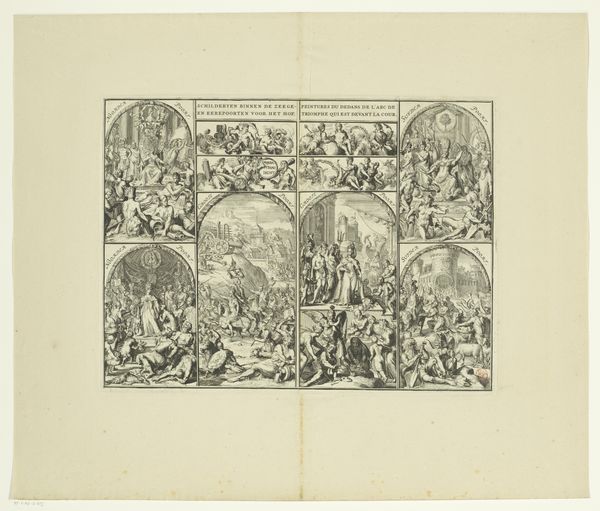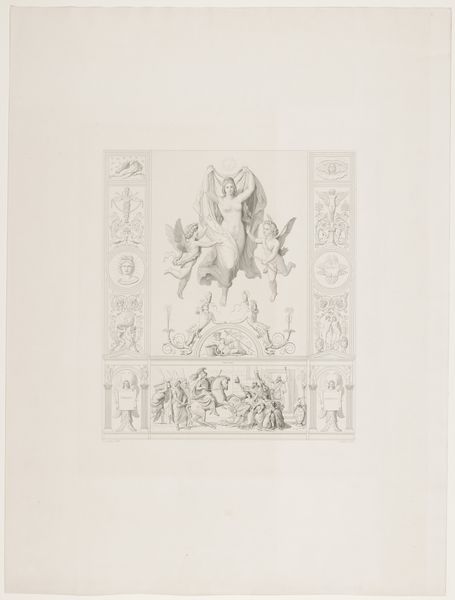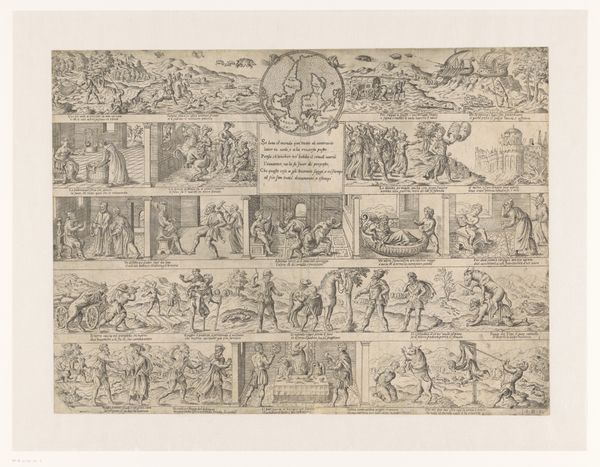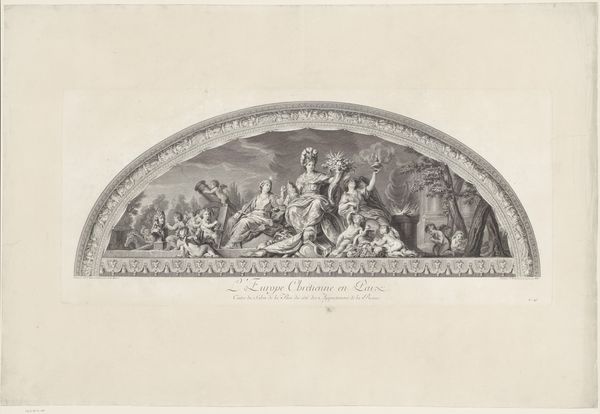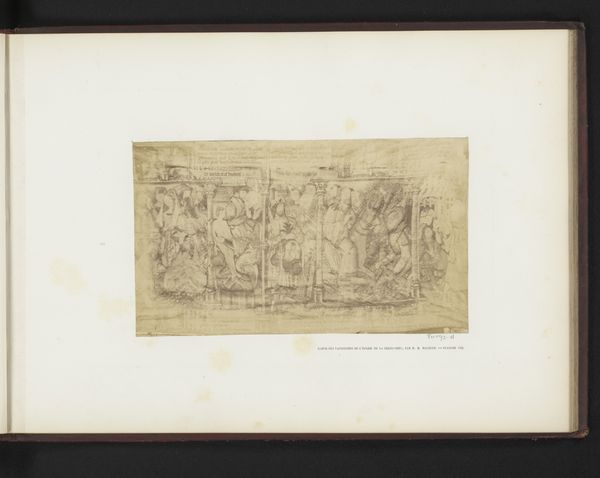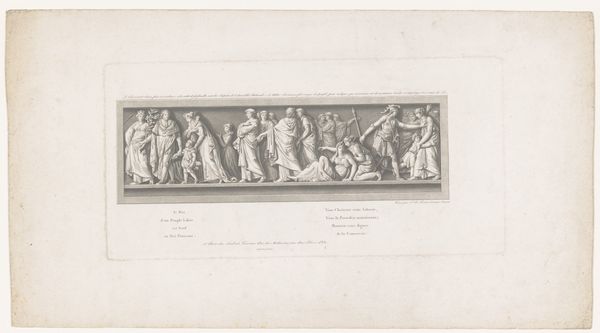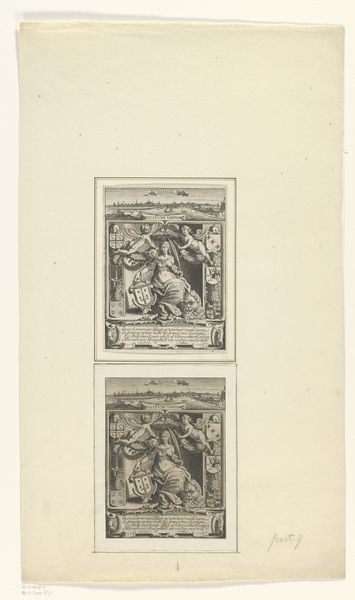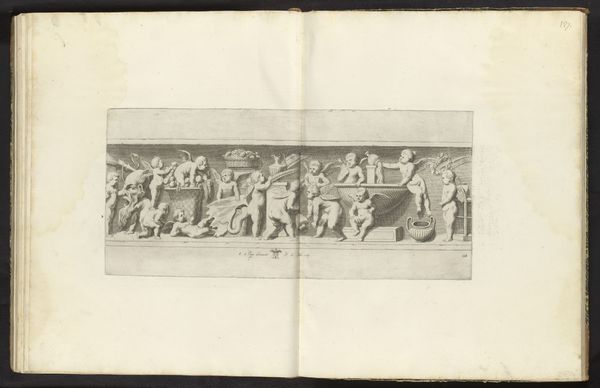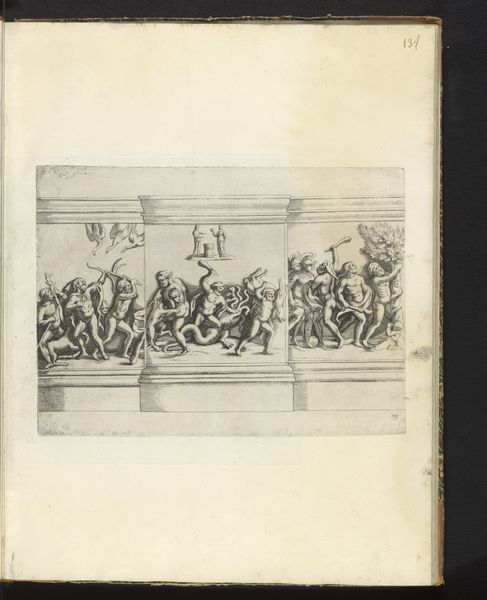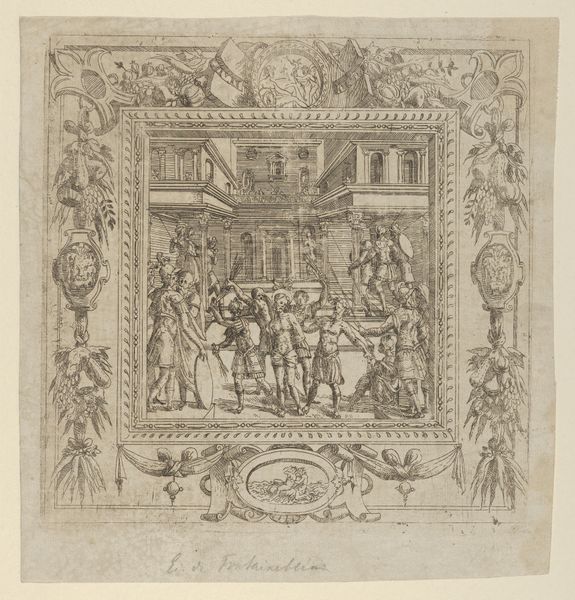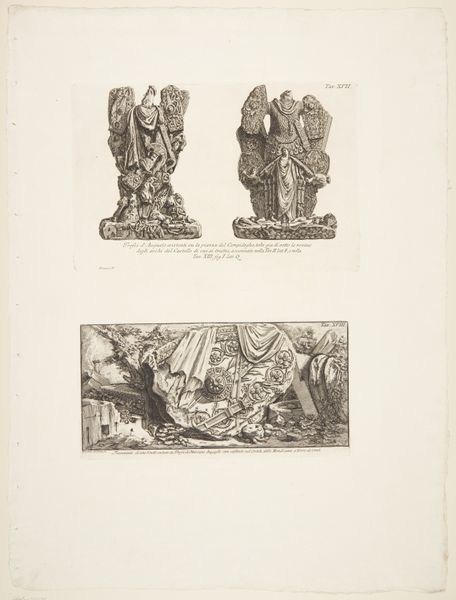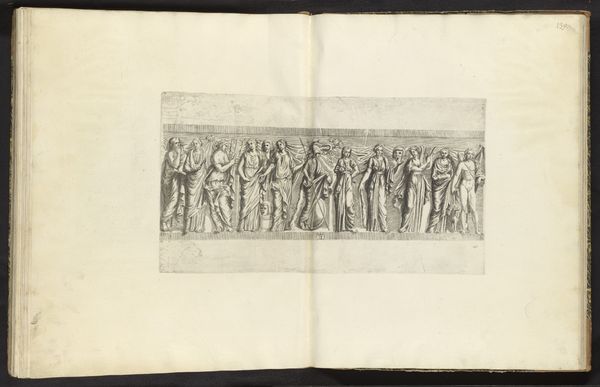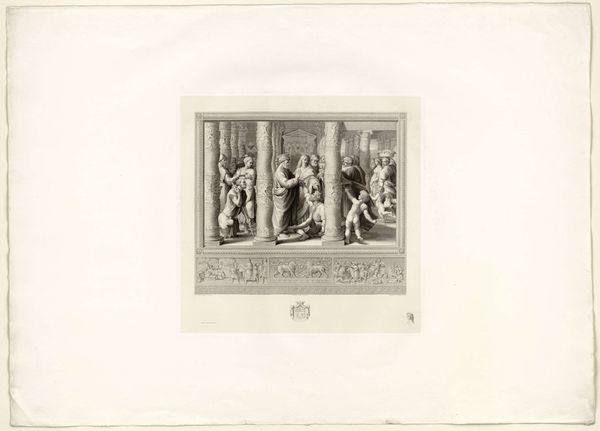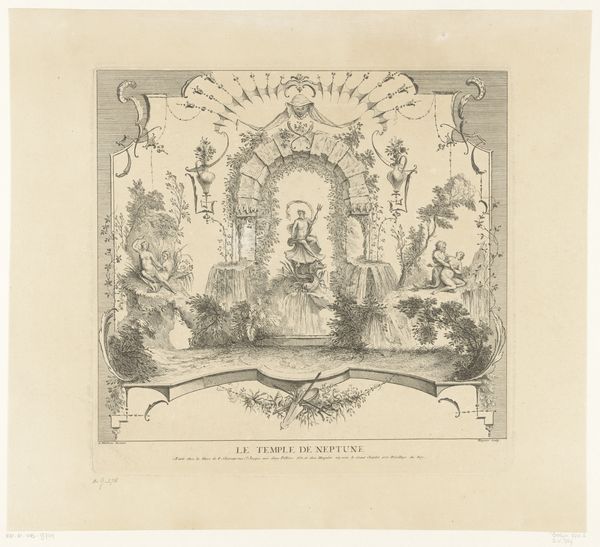
Beelden, deviezen, emblemen en andere schilderijen op de triomfbogen voor het Buitenhof, 1691 1691
0:00
0:00
romeyndehooghe
Rijksmuseum
print, engraving
#
allegory
#
baroque
# print
#
pen sketch
#
old engraving style
#
figuration
#
line
#
history-painting
#
engraving
Dimensions: height 333 mm, width 445 mm
Copyright: Rijks Museum: Open Domain
Curator: At first glance, this engraving strikes me as quite imposing, almost overwhelmingly detailed. It's packed with figures and symbols, creating a sense of grandeur and formality. Editor: Here at the Rijksmuseum we have a print made in 1691 by Romeyn de Hooghe called "Beelden, deviezen, emblemen en andere schilderijen op de triomfbogen voor het Buitenhof, 1691", which translates to something along the lines of "Images, Devices, Emblems and Other Paintings on the Triumphal Arches for the Buitenhof." Curator: Triumphal arches, yes, very common display of power, I see Baroque theatricality employed in its presentation as it shows the imagery prepared for a state event. The multiple tiers of the design give a structured order, yet it overflows with information that really puts in question how a person could easily absorb this at first. Editor: Absolutely. De Hooghe captures not just images but an entire symbolic language prevalent at the time. Take, for example, the figures at the very top - are those allegorical representations of virtues or perhaps personifications of power related to the Dutch Republic? I'm immediately curious about each iconographical choice. What does each gesture and item that each holds in its hand suggest about the values and the political messages being promoted? Curator: Knowing De Hooghe's reputation, I imagine these triumphal arches served not just to celebrate but also to project an ideal of Dutch authority. The historical context is key here. The Dutch Republic was navigating shifting alliances and persistent international challenges at the time. The placement of images for a public such as that one for Buitenhof reinforces an ideological purpose and message from the event. Editor: It speaks to the power of visual propaganda in that moment as we continue to witness today in contemporary society through diverse visual means. What lasting impact would you say that this image has contributed in shaping social and cultural discourse? Curator: That’s a great point to consider, for the political culture and its ability to be disseminated across diverse audiences at such a pivotal moment of international engagement. This reveals layers about the performative and persuasive capacity that Baroque provides that shapes and influences discourse that is seen through a specific narrative in history. Editor: And for me, the beauty resides precisely there: discovering those narratives encoded within the very fabric of the artwork, which will undoubtedly transform each person who stops to behold such artwork through the lens that the author so much wants us to interpret.
Comments
No comments
Be the first to comment and join the conversation on the ultimate creative platform.
